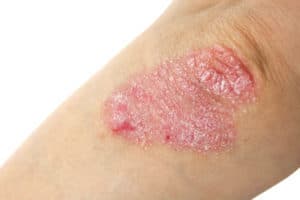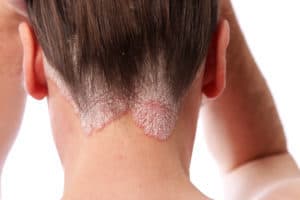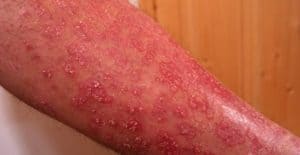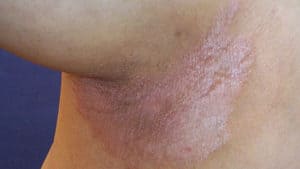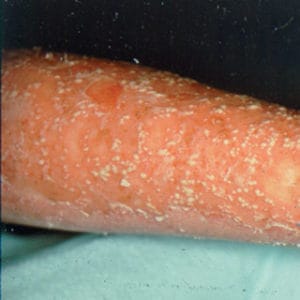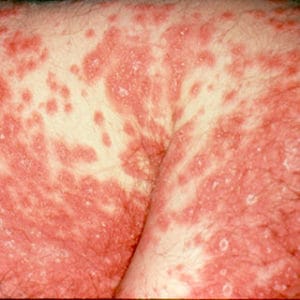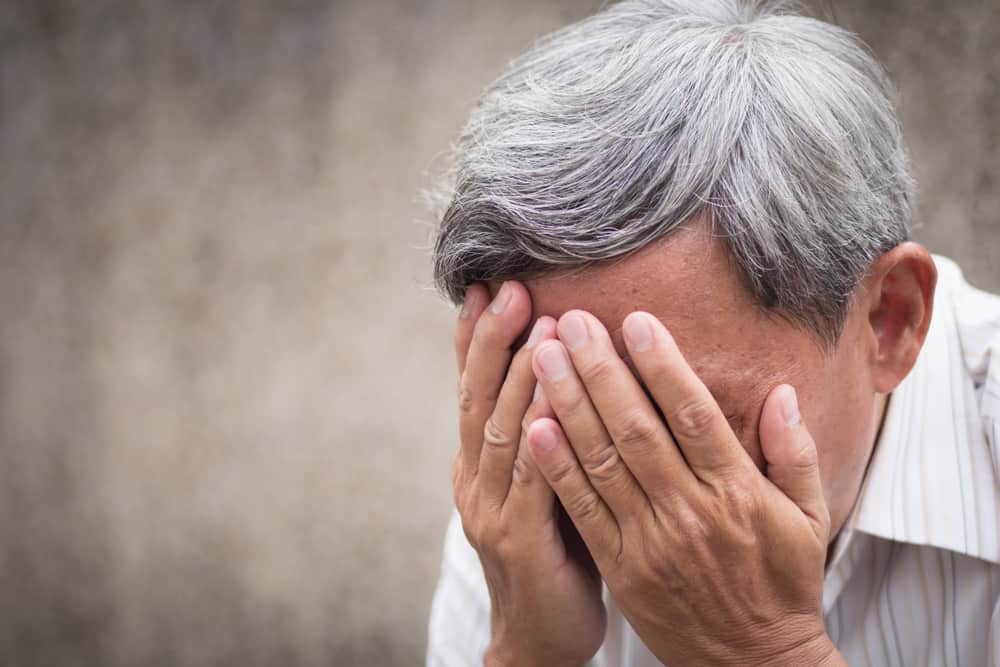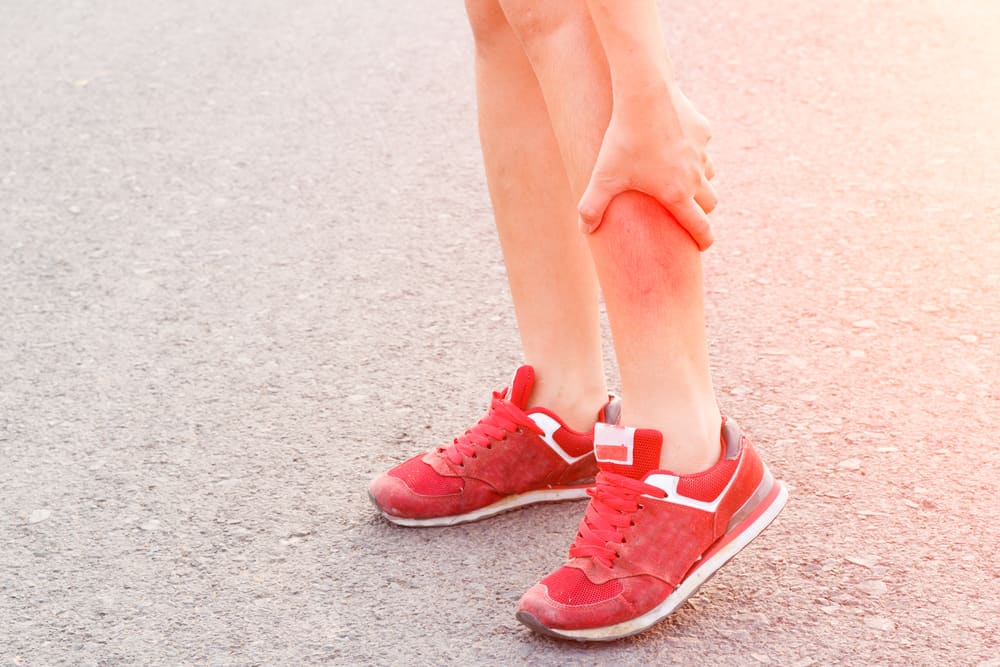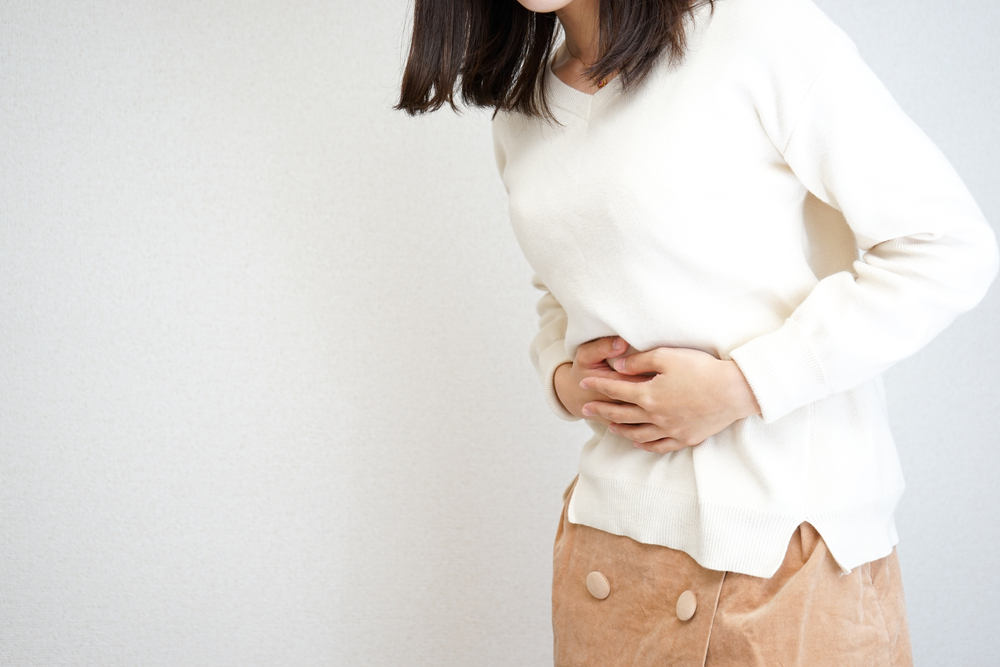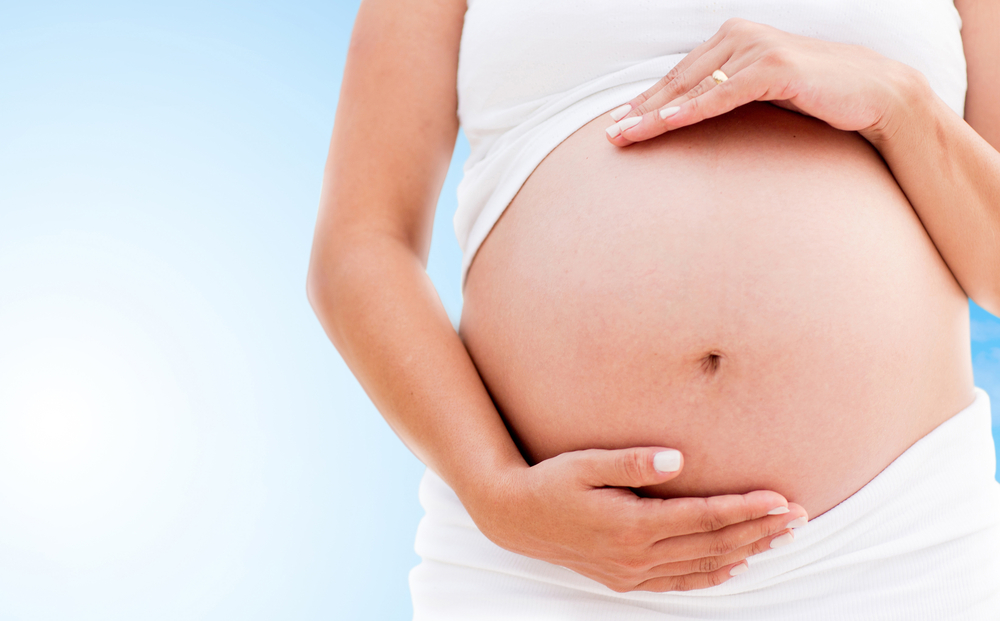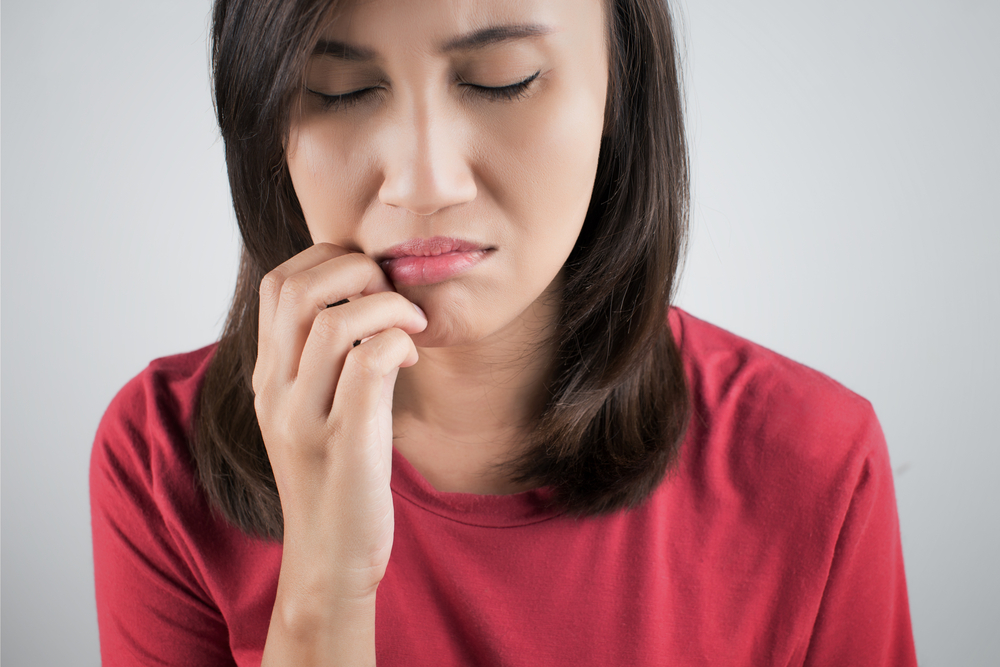Contents:
- Medical Video: Psoriasis
- Get to know psoriasis
- Type of psoriasis
- 1. Psoriasis plaque
- 2. Scalp psoriasis
- 3. Guttate psoriasis
- 4. Psoriasis inverse
- 5. Pustular psoriasis
- 6. Erythrodermic psoriasis
Medical Video: Psoriasis
Psoriasis is a chronic skin disorder with severity from mild to severe. This severity is based on how many parts of the body experience psoriasis. Mild psoriasis affects less than three percent of the body, while psoriasis affects between three and ten percent of the body. Severe psoriasis is if more than ten percent of the body is closed. Psoriasis has several types from low to severe. Knowing the type of psoriasis you might have can help make the right treatment plan.
Get to know psoriasis
Psoriasis is a disease caused by the growth of new skin cells that are so fast that they accumulate on the surface of the skin. This disease causes the skin to become reddish, thicker, scaly, and look like white-silver patches. In addition, it can also cause itching and pain in the skin. Psoriasis is one type of autoimmune disease.
Scalp, face, elbows, hands, knees, feet, chest, lower back, and folds between the buttocks are usually the most vulnerable to psoriasis. However, actually this condition can develop anywhere.
Psoriasis is not contagious, but it is a chronic disease and cannot be cured. However, there are treatments and some treatments that can help control and reduce the severity of the symptoms.
While psoriasis symptoms differ for each person, depending on the severity and type of psoriasis it has.
Type of psoriasis
There are several types of psoriasis and may have more than one type of psoriasis. Most people only have one type at a time. However, sometimes after your symptoms disappear, a new type of psoriasis can appear in response to a trigger.
Here are some types ranging from mild to severe.
1. Psoriasis plaque
Plaque psoriasis, also known as psoriasis vulgaris, is the most common form of psoriasis. The severity of psoriasis tends to be mild to moderate. This condition is characterized by an area of plaque buildup on the skin.
Plaque is the area of the skin that is thickened and has a silvery white appearance. Plaque areas can appear anywhere on the body but are most common in the knees and elbows.
Symptoms
Symptoms of psoriasis plaque can be different for each person. However, there are some common symptoms, including:
- Dry and red skin covered with silvery scales in the area of the lesion
- Plaques that are itchy or feel hot like burning
- Problems affecting the nails
Treatment
Treatment options include ttreat ultraviolet (UV) or krim and ointment, to slow down skin growth. Doctors may also give oral medication if other treatments don't work.
2. Scalp psoriasis
This type of psoriasis does not only appear on the scalp, but can also appear on the forehead, or the back of the head and spread to the neck or back of the ear.
Symptoms
Scalp psoriasis usually has the same symptoms as plaque psoriasis. In scalp psoriasis, plaques appear on the scalp and under the hair.
Someone with scalp psoriasis can have psoriasis on other parts of the body at the same time.
Other symptoms of scalp psoriasis include:
- Thick red skin on the scalp
- The scalp peels off
- Itchy and bloody scalp
- dry scalp
- Temporary hair loss during spread
Treatment
Treatment of scalp psoriasis often involves more than one method at a time. Treatment options for scalp psoriasis include shampoo, medication and ointment, UV light therapy, injections, scalp therapy.
3. Guttate psoriasis
Guttate psoriasis is characterized by dots or red spots that spread throughout the skin. The spots and spots are not as thick as plaque in plaque psoriasis.
This type of psoriasis often starts in childhood or young adults and appears after infection.
Symptoms
In some cases, this psoriasis can cause moderate to severe symptoms, such as:
- Small red spots on the skin
- a rash that can appear anywhere but mostly in the trunk
- Sudden onset of rash after illness or infection
Treatment
Most doctors consider topical treatments to be very effective for guttate psoriasis. However, because this psoriasis causes so many small spots, it will be very tiring, so topical treatments can be used more if the rash is only in a smaller area.
Other treatment options include mild therapy. Doctors rarely use drugs that affect the entire body for psoriasis.
4. Psoriasis inverse
Inverse psoriasis appears as the red mark most often found in the folds of the skin, such as in the armpit and groin, under the breast, and behind the knee. People with inverse psoriasis often have other forms of psoriasis elsewhere in their bodies.
Symptoms
Areas affected by inverse psoriasis rarely have scaly plaques that are common with other forms of psoriasis. Areas of the body most often affected by inverse psoriasis tend to be quite sensitive and have thinner skin than other areas. This can make handling this type of psoriasis more difficult.
Treatment
Steroid creams and ointments are effective treatments, but the risk of side effects will be higher due to thinness of the skin.
5. Pustular psoriasis
This type of psoriasis is characterized by the presence of pus-containing white blisters.
Symptoms
Blisters caused by pustular psoriasis can be restricted to one area of the body or can also be in the whole body. Before blisters appear, the skin tends to redden. Once the blisters are gone, the skin can become scaly.
A specific type of pustular psoriasis called palmoplantar pustulosis causes blisters to form on the palms and soles of the feet. Blisters can form patterns and over time, these blisters will become brown crusts.
Treatment
Treatment options for psoriasis are oral medications (such as acitretin and methotrexate) or light therapy, to reduce the risk of side effects and cleanse the affected skin area.Pustular psoriasis only attacks one area of the body and can be treated with ointment.
6. Erythrodermic psoriasis
Erythrodermic psoriasis is severe and can be life threatening.This type of psoriasis covers almost the entire body with a red, peeling, very painful rash that looks as if it has been caused by a burn.
Symptoms
Symptoms of erythrodermic psoriasis tend to be very serious. They may include a combination of symptoms such as:
- Red skin that is inflamed and flaking
- The skin looks like a burn
- Itching is severe, painful, and hot like burning
- Faster heart rate
- Fever
- Swelling in the legs or ankles
People who have erythrodermic psoriasis are susceptible to infection. They may also experience other serious problems, including heart failure and pneumonia.
Treatment
People with erythrodermic psoriasis usually require hospitalization. Unlike other cases of psoriasis, topical creams are not the first treatment. Instead, people with psoriasis need drugs that affect the entire body.


